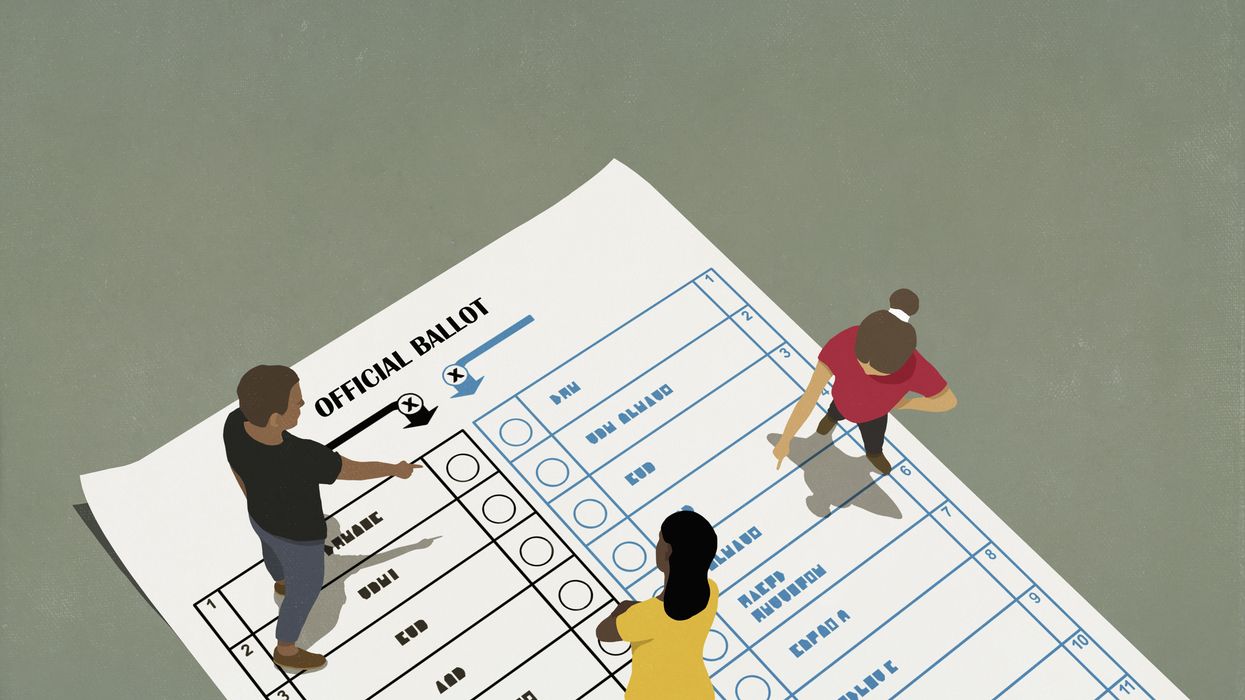Half of eligible voters participated in the 2018 midterm – the highest turnout rate in a century. And early indicators show Americans are
on pace to match those numbers this year.
Highly contested races in Arizona, Georgia, North Carolina, Pennsylvania and other states will determine control of the U.S Senate, as voters weigh in on the federal government’s performance on the economy, the state of democracy, abortion rights and other issues.
The abortion fight is also a critical factor in state contests, with gubernatorial and legislative races in the spotlight. Following the Dobbs v. Jackson Women’s Health Organization ruling, in which the Supreme Court overturned Roe v. Wade and gave states the authority to decide whether to permit abortions, voters are motivated to cast ballots on or before Nov. 8.
With so many issues in play, selecting a candidate to support can be exceedingly difficult, especially as a voter moves further down the ballot. Never fear – The Fulcrum has some suggestions.
Separating the candidates on the issues
Political advertising is designed to influence. Social media is full of mis- and disinformation. So you need an unbiased source of information about the candidates. One place to turn is Guides.vote, which produced nonpartisan information about races in every state as well as a national voter guide that distinguishes the Democratic and Republican positions on polarizing issues.
The guides provide insights into the candidates in state and federal races and describe their stances on numerous issues like education, the economy and the environment, making it easier for voters to decide which candidates best support the issues that matter most to them.
For example, the national guide for the U.S. House of Representatives details how Democrats and Republicans voted on various issues over the past six years. On the topic of abortion, the guide states that “Democrats voted to keep abortion legal” and “oppose making it a federal crime to perform an abortion after 20 weeks,” whereas Republicans “voted to ban or mostly ban abortion” by “let[ting] states ban abortion as they choose.”
The guide also covers the economy and taxes, noting that “Democrats voted to raise corporate and top-bracket taxes and raise federal investment in social programs and the economy”, while House Republicans opposed that proposal. The Republicans “opposed the infrastructure bill” and “pass[ed] $1.5 trillion 2017 tax cuts.” The guide provides several links for context of these and other issues spanning from gun laws to immigration.
Guides.vote has also provided a breakdown of the Supreme Court justices and the political leaning of the president who appointed them. It reviews several divisive cases, the court’s decisions and how the justices split on them.
With some states hosting more competitive races than others, certain “featured” guides (New Hampshire, Florida and Arizona for example) dive deeper into some races.
Additional reading:
- Part 1: Understand the process
- Part 2: Voter registration
- Part 3: Voting by mail
- Part 4: Do your research
New Hampshire is home to a Senate race between Republican Don Bolduc and the Democratic incumbent, Maggie Hassan. On the issue of the economy, the guide reveals that Hassan aims to increase government investment in that sector, previously supporting and drafting parts of the American Rescue Plan during the Covid-19 pandemic. Conversely, Bolduc opposes increasing government investment without offsets, stating: “No more bailouts, no more government handouts, no more spending packages without corresponding cuts.”
The guide for Florida highlights the races for Senate and governor. Republican Sen. Marco Rubio is defending his seat against Democratic Rep. Val Demings. Rubio has been very vocal about his stance on abortion, calling the “abortion epidemic” an “atrocity” and voting against codifying the right to an abortion. Demings is in favor of making abortion legal, expressing, “We must work relentlessly to preseve our right to choose and our right to privacy.”
In the race for governor, Democrat Charlie Crist is challenging Republican incumbent Ron DeSantis. The guide highlights DeSantis’ opposition to LGBTQ rights; largely aiming to limit provisions like health care for gender dysphoria treatments while also signing legislation banning “transgender females from participating in women’s sports and an anti-discrimination order for state employees that excluded LGBTQ people.” His rival, Crist, has a history of supporting expanded rights for LGBTQ people, including his position as vice chair of the House LGBTQ+ Equality Caucus.
The Arizona guide, which includes information on the race for secretary of state between Republican Mark Finchem and Democrat Adrian Fontes, largely focuses on election and voting issues like ballot verification and the validity of the 2020 presidential election. Finchem has expressed his support of hand-counting ballots instead of using electronic instruments to verify results while Fontes has opposed the proposal, stating: “Nobody who is serious about election administration believes that hand-counting is better [than technology].”
Other tools, like Vote 411, allow candidates to define their positions themselves. Produced by the League of Women Voters, the site invites candidates for races up and down the ballot to answer a series of questions regarding their stance on various issues of importance to constituents.
Users simply enter their address on the site and get a list of races that will appear on their ballot. They can then select a race and compare candidates’ responses to the posed questions. Not every candidate participates, which can make it difficult in some cases to get a complete picture of who is running.
Another resource, Ballotpedia, offers biographical information on candidates for office.
Who is funding candidates?
Voters may also want to consider where candidates get their financial support, either through direct campaign contributions or through political committees. Luckily, there are tools for that as well.
The federal government requires campaign fundraising and spending to be disclosed, and that data is available to the public on the Federal Election Commission website. Anyone can dive into campaign data to see which individuals have donated to a candidate, with the option to search by name, location, employer and occupation.
And then there’s the nonprofit OpenSecrets, which provides robust, expansive data on money in politics. The OpenSecets database, which is also free to use, goes beyond individual contributions to examine the funding role of super PACs, nonprofits, independent spending, lobbying and more.
With just a little bit of work, voters can get a strong understanding of who is funding campaigns. That, combined with a better understanding of candidates’ position on key issues, should help voters make informed decisions.


















